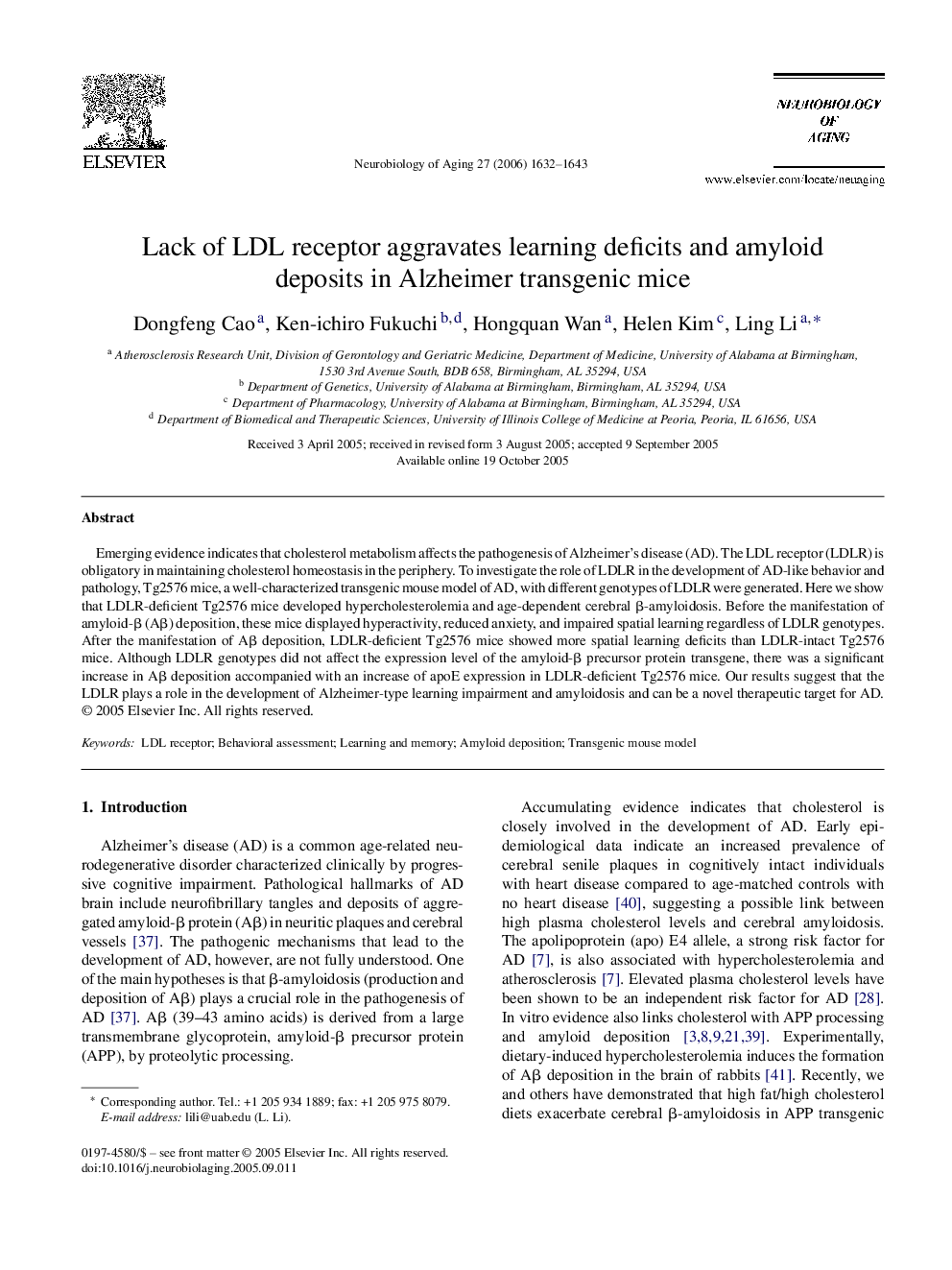| Article ID | Journal | Published Year | Pages | File Type |
|---|---|---|---|---|
| 328833 | Neurobiology of Aging | 2006 | 12 Pages |
Emerging evidence indicates that cholesterol metabolism affects the pathogenesis of Alzheimer's disease (AD). The LDL receptor (LDLR) is obligatory in maintaining cholesterol homeostasis in the periphery. To investigate the role of LDLR in the development of AD-like behavior and pathology, Tg2576 mice, a well-characterized transgenic mouse model of AD, with different genotypes of LDLR were generated. Here we show that LDLR-deficient Tg2576 mice developed hypercholesterolemia and age-dependent cerebral β-amyloidosis. Before the manifestation of amyloid-β (Aβ) deposition, these mice displayed hyperactivity, reduced anxiety, and impaired spatial learning regardless of LDLR genotypes. After the manifestation of Aβ deposition, LDLR-deficient Tg2576 mice showed more spatial learning deficits than LDLR-intact Tg2576 mice. Although LDLR genotypes did not affect the expression level of the amyloid-β precursor protein transgene, there was a significant increase in Aβ deposition accompanied with an increase of apoE expression in LDLR-deficient Tg2576 mice. Our results suggest that the LDLR plays a role in the development of Alzheimer-type learning impairment and amyloidosis and can be a novel therapeutic target for AD.
